In the trading and financial markets, technical indicators are key. They help analyze trends, make decisions, and improve strategies. These tools give insights into supply and demand and market psychology. They track volume and momentum shifts, guiding traders through market changes.
Traders use many indicators, like on-balance volume (OBV) and moving average convergence divergence (MACD). The relative strength index (RSI) and stochastic oscillator are also important. Each indicator offers a unique view, helping traders understand the market better and spot opportunities.
Key Takeaways
- Technical indicators provide valuable insights into market trends and trading opportunities.
- Commonly used indicators include OBV, A/D line, ADX, MACD, RSI, and stochastic oscillator.
- These indicators offer different perspectives on market dynamics, such as momentum, volatility, and trading volume.
- Understanding the nuances and applications of technical indicators can help traders make more informed trading decisions.
- Incorporating multiple indicators can provide a more comprehensive analysis of market conditions.
Understanding Technical Analysis Fundamentals
Technical analysis is key in trading, offering insights into price movements and market psychology. It looks at past market data, like price action and trading volume, to spot patterns and trends. These insights help traders make better decisions for the future.
Types of Technical Analysis Tools
Traders use many technical analysis tools to understand the markets. They include patterns, trendlines, channels, and indicators like moving averages and volume metrics. Knowing these tools helps traders make informed, data-based choices.
Role of Price Action and Volume
Price action and trading volume are vital in technical analysis. Price action shows market sentiment and supply and demand forces. Volume tells us about the strength and conviction behind price changes. By watching these, traders can spot support and resistance levels and potential trend changes.
Importance of Technical Indicators in Trading
Technical indicators, like moving averages and oscillators, are essential for traders. They help spot overbought or oversold conditions using past price and volume data. These indicators are great for traders who rely on data, not emotions.
“Technical analysis is a way of looking at the markets to identify trends and forecast future price movements. It’s a data-driven approach that focuses on price, volume, and other market-related information to make trading decisions.”
Overlay vs Oscillator Indicators
In the world of technical analysis, traders use many indicators to understand market trends and movements. These indicators fall into two main categories: overlay indicators and oscillator indicators. Knowing the difference between them is key for making good trading decisions.
Overlay indicators are shown directly on the price chart. They show how the indicator relates to the asset’s price. Examples include moving averages and Bollinger Bands. These tools help spot trends and give insights into market momentum.
Oscillator indicators, however, are shown separately, above or below the price chart. They move between a high and low point, offering a unique view of market dynamics. The Stochastic Oscillator, MACD, and Relative Strength Index (RSI) are well-known examples. They help find when the market is overbought or oversold, giving traders signals for potential changes.
“The key to successful trading is understanding the different types of indicators and how they can complement each other in your analysis.”
Choosing between overlay and oscillator indicators depends on your trading style and the market. Overlay indicators are great for seeing trends. Oscillator indicators are better for measuring momentum and spotting market changes. Using both types can give traders a deeper understanding of the market, leading to better trading choices.
Moving Average: The Foundation of Trend Analysis
Moving averages are key in technical analysis. They help spot trends in the market. These indicators smooth out price data, making trends clearer. The Simple Moving Average (SMA) and the Exponential Moving Average (EMA) are two common types.
Simple Moving Average (SMA)
The SMA gives equal weight to all data points in a time frame. It’s calculated by adding recent data and dividing by the time period. This makes it look back at past prices for signals.
Exponential Moving Average (EMA)
The EMA, on the other hand, weighs recent data more. It’s more responsive to current market changes. This is because it uses a multiplier for the latest price, making it quicker to react to market shifts.
Moving Average Applications in Trading
Traders use moving averages to find trend directions and set support and resistance levels. They also use them to spot buy or sell signals. For instance, a 9-day EMA crossing above the 50-day EMA can signal a bullish trend. A 50-day SMA crossing below the 200-day SMA might show a bearish trend or a market downturn.
“Moving averages are the backbone of trend analysis, helping traders and investors navigate the dynamic market landscape.”
Knowing the difference between SMA and EMA helps traders pick the right moving average for their strategy. This way, they can make smart decisions based on market trends.
Technical Indicator Fundamentals
Technical analysis uses data to look at trends in an asset’s price and volume over time. It’s different from fundamental analysis, which looks at a company’s true value. Technical indicators are math-based, using past price, volume, or open interest data.
These indicators help traders set stop-loss orders and spot trend directions. They also help avoid timing mistakes. By using these tools, traders can make better choices based on data, not just guesses.
Technical analysis believes that past market behaviors can predict future prices. Even though some question its effectiveness, these indicators are still key for traders. They help understand technical analysis basics, indicator calculation, and data interpretation.
“The function of technical analysis is to identify price patterns and trends, which can then be used to anticipate future price movements.”
MACD: Momentum and Trend Direction
The Moving Average Convergence Divergence (MACD) is a key tool in technical analysis. It helps understand an asset’s momentum and trend direction. Gerald Appel created it in the 1970s. Today, it’s a favorite among traders on online platforms.
MACD Signal Line Crossovers
MACD has two main parts: the MACD line and the signal line. The MACD line is the difference between two moving averages. The signal line is a moving average of the MACD line. Traders watch for when these lines cross over each other.
A cross above the signal line is a buy signal. A cross below is a sell signal. This helps traders decide when to buy or sell.
MACD Divergence Patterns
MACD also spots trend changes through divergence patterns. MACD divergence happens when the indicator goes against the price. This might mean a trend change is coming. Traders watch for these signs to predict market shifts.
Even though MACD is great for spotting momentum and trend direction, it’s best used with other tools. MACD signal line crossovers and divergences offer insights. But, they can also lead to false signals, especially in volatile markets.
Relative Strength Index (RSI) Strategy
The Relative Strength Index (RSI) is a key tool in technical analysis. It was created by J. Welles Wilder Jr. in 1978. The RSI shows how fast and how much prices change, moving between 0 and 100.
When the RSI is over 70, it’s seen as overbought. A reading under 30 is considered oversold. Traders use it to spot trends and warn of possible reversals. It also helps find divergences, where the RSI and price move in opposite ways, hinting at a trend change.
“The RSI is a momentum oscillator that measures the speed and change of price movements. It oscillates between 0 and 100, with 70 and above considered overbought and 30 and below considered oversold.”
The RSI is great because it stays in overbought or oversold areas during strong trends. In an uptrend, it stays above 30. In a downtrend, it stays below 70. This gives traders valuable insights into market momentum.
Traders often pair the RSI with other tools, like the Moving Average Convergence Divergence (MACD). This helps confirm trading signals and make better decisions. By understanding the RSI and its connection to price action, traders can spot trend reversals and find trading chances.
The Relative Strength Index is a flexible oscillator that offers deep insights into market conditions. By watching RSI levels, traders can grasp market sentiment better and make smarter trading choices.
Bollinger Bands Trading Techniques
Bollinger Bands are a useful tool in technical analysis. They help understand market volatility and price movements. John Bollinger created them in the 1980s. They have a middle line, usually a 20-period simple moving average (SMA), and two outer bands.
Understanding Volatility with Bollinger Bands
The width of Bollinger Bands changes with market volatility. Narrow bands mean low volatility, which often leads to big market moves. Wide bands show high volatility, signaling when prices might be too high or too low.
Trading the Bollinger Bounce
The “Bollinger Bounce” is a well-known strategy. It involves buying when prices hit the lower band and selling when they hit the upper band. This strategy uses the bands to find good times to buy or sell, based on price movements.
“Bollinger Bands provide a simple, yet powerful, tool for assessing volatility. By measuring market volatility, you can better gauge overbought or oversold conditions.”
– John Bollinger, creator of Bollinger Bands
Traders also use Bollinger Bands to spot trends, breakouts, and set price targets. Their flexibility makes them a key tool for traders.
Stochastic Oscillator Applications
The stochastic oscillator is a key momentum indicator in technical market analysis. It compares a closing price to its price range over time, moving between 0 and 100. When it’s above 80, it’s seen as overbought. Below 20, it’s oversold. Traders use it to spot potential reversals and trend strength.
George Lane created the stochastic oscillator in the 1950s. It shows a stock’s closing price compared to its highs and lows over a period. It has two lines: %K (fast) and %D (slow), with %D being a 3-period moving average of %K. Traders often pair it with the Relative Strength Index (RSI) to confirm signals and avoid false readings.
A stochastic indicator reading above 80 signifies the asset is nearing the top of its trading range, while below 20 shows it is near the bottom.
The stochastic oscillator is great at spotting trend reversals through divergences. A bullish divergence happens when the price makes a lower low but the stochastic indicator touches a higher low. This suggests a possible upward reversal. On the other hand, a bearish divergence occurs when the price makes a higher high but the stochastic indicator hits a lower high, indicating a possible downward reversal.
Stochastic crossovers in the overbought and oversold areas can give buy and sell signals, especially in range-bound markets. But, it’s not perfect and can give false signals in strongly trending markets. So, it’s crucial to use it with other technical analysis tools and market context to confirm signals and manage risk.
On-Balance Volume (OBV) Analysis
On-Balance Volume (OBV) is a key technical indicator. It tracks the total volume flow in a security. Joseph Granville created it in 1963 to forecast stock price changes by studying volume.
OBV looks at how institutional and retail investors trade. It shows the net volume flow. The formula adds volume on up days and subtracts on down days.
Volume-Price Relationship
The OBV line’s direction is more important than its value. If both price and OBV have higher peaks and troughs, the trend is likely up. Lower peaks and troughs suggest a downward trend.
OBV Trading Signals
Traders use OBV to confirm trends and spot reversals. A rising OBV during a trading range means accumulation, possibly leading to an upward breakout. Falling OBV suggests distribution, hinting at a downward breakout.
Divergences between price and OBV offer valuable signals. A negative divergence means price peaks are higher than OBV, possibly ending an upward trend. Positive divergences, where price troughs are lower than OBV, could signal a trend reversal.
OBV is a leading indicator in technical analysis. It’s best used with other indicators for accurate analysis. By understanding the volume-price relationship and OBV trading signals, traders can better use on-balance volume for trend confirmation.
Average Directional Index (ADX) Strategy
The Average Directional Index (ADX) is a key tool for traders. It shows the trend’s strength, no matter the direction. It moves between 0 and 100. A value over 25 means a strong trend, while under 20 shows a weak trend.
Traders use ADX with the Positive Directional Indicator (+DI) and Negative Directional Indicator (-DI). This helps them spot the trend’s direction. They look for strong ADX readings to avoid markets that are stuck in a range.
“The ADX helps traders identify the strength of trends and potential trend reversals.”
The ADX gives a clear number for trend strength. A high ADX value means a strong trend. A low value means a weak trend. This helps traders make better choices and manage risks.
But, the ADX is a lagging indicator. It might not signal trend reversals quickly. To improve their strategies, traders often use it with other indicators like MACD, Bollinger Bands, and RSI.
Understanding the ADX helps traders create strong strategies. They can use the trend strength and directional movement to make more profitable trades.
Ichimoku Cloud Trading System
The Ichimoku Cloud is a detailed tool for market analysis. It helps traders see trends, momentum, and support and resistance levels. It has five lines: Conversion Line, Base Line, Leading Span A, Leading Span B, and the Lagging Span. The space between Leading Span A and B is the “cloud” or “Kumo,” the system’s core.
Traders use the Ichimoku Cloud to spot trend directions, momentum strength, and support and resistance points. The cloud’s design and its parts’ connections give a full view of the market. This makes it a strong tool for traders at all levels.
“The Ichimoku Cloud is a technical analysis system that offers a comprehensive and intuitive way to identify trends, support, and resistance levels in the market.”
At first, the Ichimoku Cloud might seem complex. But its ability to combine many indicators into one clear view makes it very useful. By learning about its parts, traders can make better choices and possibly improve their returns.
The Ichimoku Cloud is flexible and works in many markets and time frames. It’s key to use it with other tools and know the market well. This way, traders can use it to their advantage and succeed in their strategies.
Using Multiple Indicators Together
In technical analysis, mixing different indicators can give traders stronger signals. It helps confirm trends and offers various insights. But, using too many indicators can lead to analysis paralysis.
Indicator Combination Strategies
Good strategies combine trend-following tools like Moving Averages with momentum indicators like Relative Strength Index (RSI) or Moving Average Convergence Divergence (MACD). This helps spot the trend’s direction and strength. Adding volume indicators, like On-Balance Volume (OBV), with price indicators gives a full view of market dynamics.
Choose complementary indicators that give different views. This way, you avoid analysis paralysis and make better trading choices.
Avoiding Analysis Paralysis
It’s tempting to use many indicators, but pick them wisely. Too many can cause confusion and bad trading decisions. Your goal is a clear trading space that helps you stay focused.
Try out different indicator combinations and test them. Find the best tools for your trading style.
“The key to successful trading is not how many indicators you use, but how well you understand and apply them.”
Common Technical Indicator Mistakes
Technical indicators are great for market analysis but can be tricky if not used right. Traders often rely too much on indicators without looking at other important things. This can cause them to miss out on good opportunities.
Indicators can give false signals, especially in markets that are not moving much. They might show signals that are not real. It’s important to remember that indicators are slow to react. They might not show changes in the market right away. This can lead to making decisions based on old information.
Another mistake is using too many indicators on one chart. This can confuse traders and make it hard to find clear signals. Experts say to use only 1-3 indicators to keep things simple and clear.
Some traders also don’t know the indicator’s limitations. Each indicator works best in certain markets. Using an indicator without checking if it fits the current market can lead to bad trades.
To avoid these mistakes, it’s key to use technical indicators with other analysis methods. This includes looking at price action, market mood, and fundamental data. By understanding the strengths and weaknesses of each indicator, traders can make better choices.
Real-Time Application of Indicators
Using technical indicators in real-time trading needs a deep understanding of the market. Traders must look at the overall market, the time frame, and specific asset factors. This helps in making smart decisions based on indicator signals. It’s also key to manage risks by setting stop-loss and take-profit levels.
Market Context and Timing
Good traders know that technical indicators work best in the right market setting. They avoid making decisions based on indicators alone, without seeing the bigger picture. By looking at trends, volatility, and market mood, they can match their strategies with the current market.
Risk Management Integration
Adding risk management to your trading with indicators is essential. Using stop-loss and take-profit orders based on indicators can reduce losses and grab profits. Also, spreading out your investments and sizing positions based on risk can make your strategy stronger. Regular practice and testing can improve your skill in using indicators in real-time trading.
FAQ
What are technical indicators and how are they used in trading?
Technical indicators help traders understand market trends. They use these tools to make better trading decisions. Indicators like trading volume show if prices are likely to move up or down.
What are the key types of technical indicators?
Important indicators include on-balance volume (OBV) and accumulation/distribution line. Others are average directional index, aroon oscillator, and moving average convergence divergence (MACD). Also, relative strength index (RSI) and stochastic oscillator are key.
What is the difference between overlay and oscillator indicators?
Overlay indicators are shown on the same chart as price data. Examples are moving averages and Bollinger Bands. Oscillator indicators, like stochastic oscillator and MACD, are plotted above or below the price chart.
How do moving averages work and how are they used in trading?
Moving averages help spot market trends. They smooth out price data into a single line. Traders use them to find trend direction and potential buy or sell signals.
What are the key features and applications of the MACD indicator?
The MACD shows the relationship between two moving averages. It helps identify trend direction and momentum. Signal line crossovers and MACD divergence can signal trend reversals.
How can the Relative Strength Index (RSI) be used in trading strategies?
The RSI measures price movement speed and change. It’s used to spot overbought or oversold conditions. Traders use it to confirm trends and predict reversals.
What are Bollinger Bands and how can they be used for trading?
Bollinger Bands show price volatility. The middle band is a simple moving average. The outer bands expand and contract with volatility. They help spot overbought or oversold conditions.
How does the Stochastic Oscillator work and what are its applications?
The Stochastic Oscillator compares closing prices to price ranges. It’s used to spot potential reversals and trend strength. However, it can give false signals in strong trends.
What is On-Balance Volume (OBV) and how can it be used for trading?
OBV measures buying and selling pressure. It adds volume on up days and subtracts on down days. Traders use it to confirm trends and spot reversals.
How can the Average Directional Index (ADX) be used to identify trend strength?
ADX measures trend strength, regardless of direction. It helps traders avoid range-bound markets. However, it’s a lagging indicator and may not signal trend reversals timely.
What is the Ichimoku Cloud trading system and how can it be used?
The Ichimoku Cloud system provides trend information and potential support and resistance levels. It consists of five lines forming the “cloud.” Traders use it to identify trends and potential entry and exit points.
How can traders combine multiple technical indicators effectively?
Combining indicators can give stronger trading signals. Trend-following indicators with momentum oscillators or volume indicators with price-based indicators are common combinations. But, using too many can lead to conflicting signals.
What are some common mistakes when using technical indicators?
Common mistakes include relying too much on indicators and ignoring the trend. Using too many indicators can also cause confusion. Remember, indicators are lagging and may not catch sudden market changes.
How can traders apply technical indicators effectively in real-time trading?
Traders need to understand market context and timing. They should consider market conditions, time frame, and asset-specific factors. Combining indicators with price action analysis and fundamental factors is key to making informed decisions.


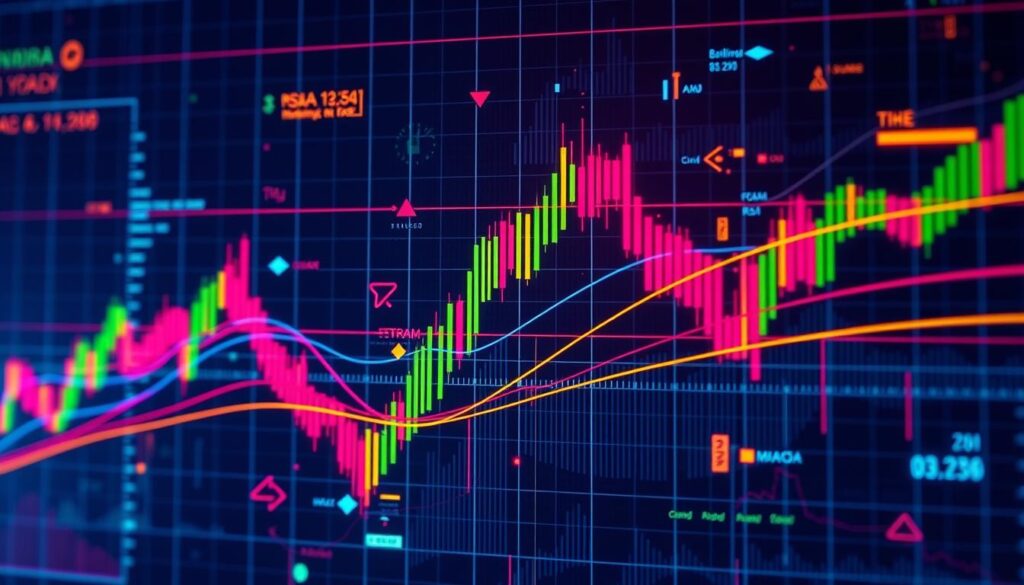
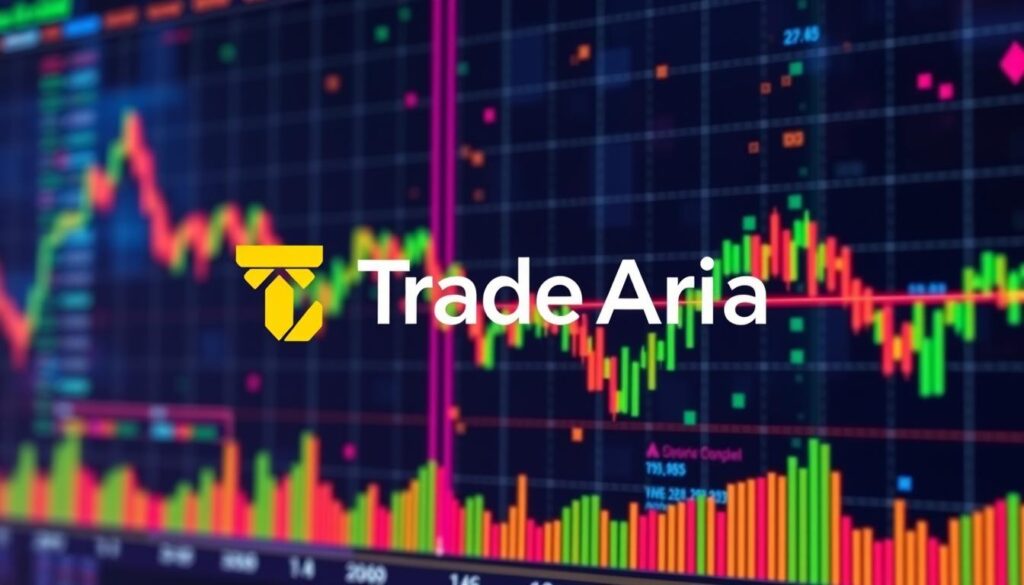

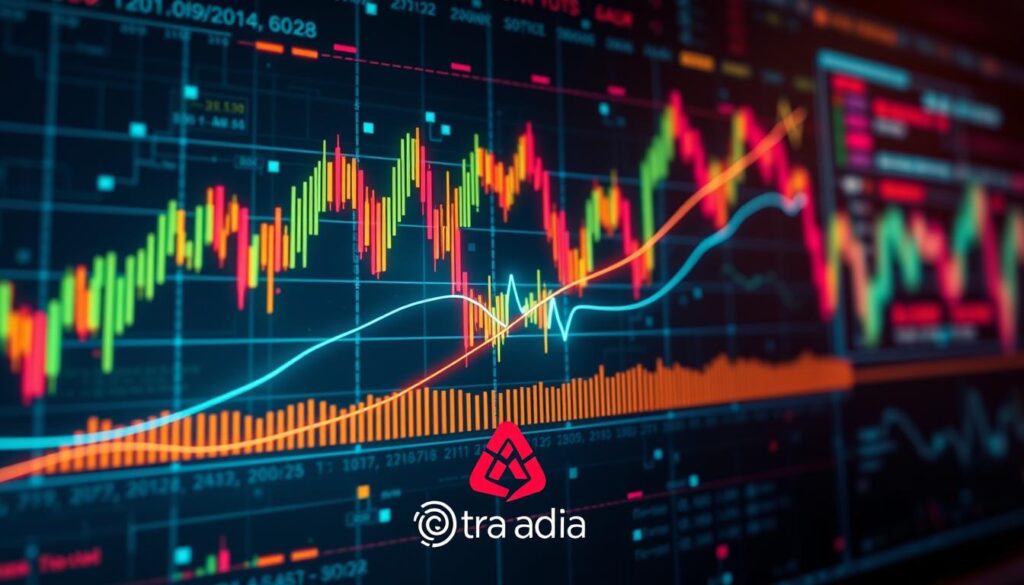
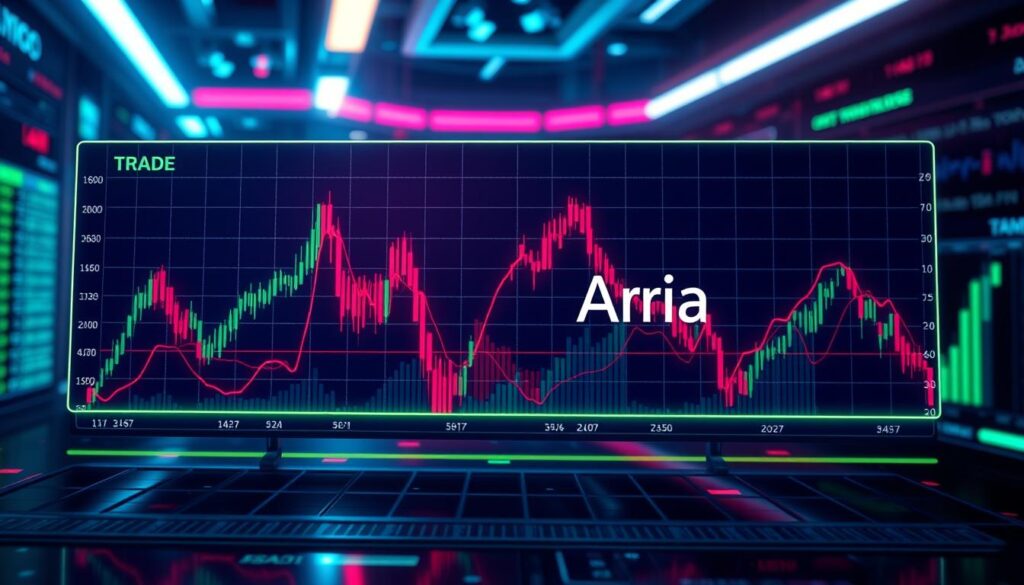

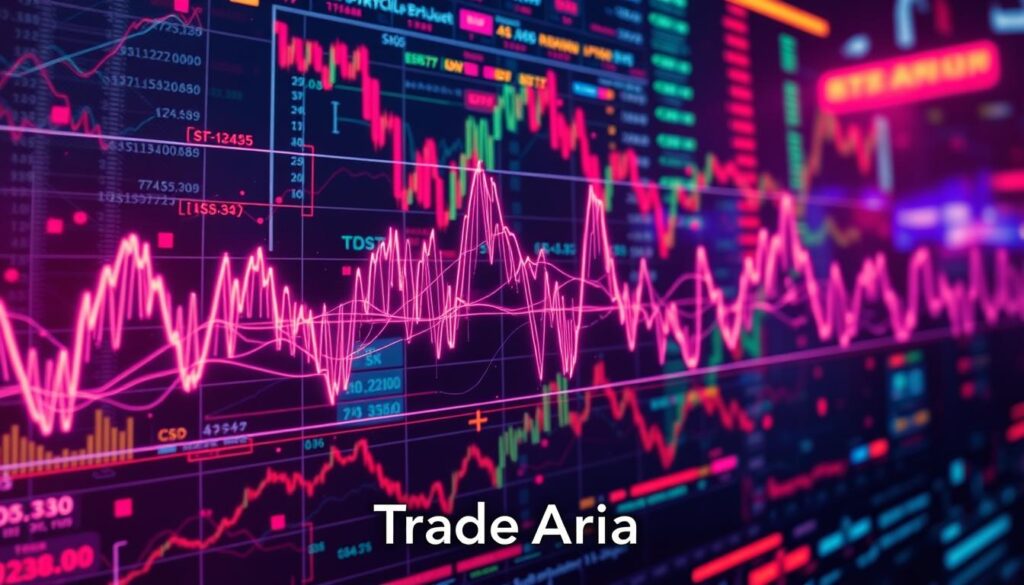
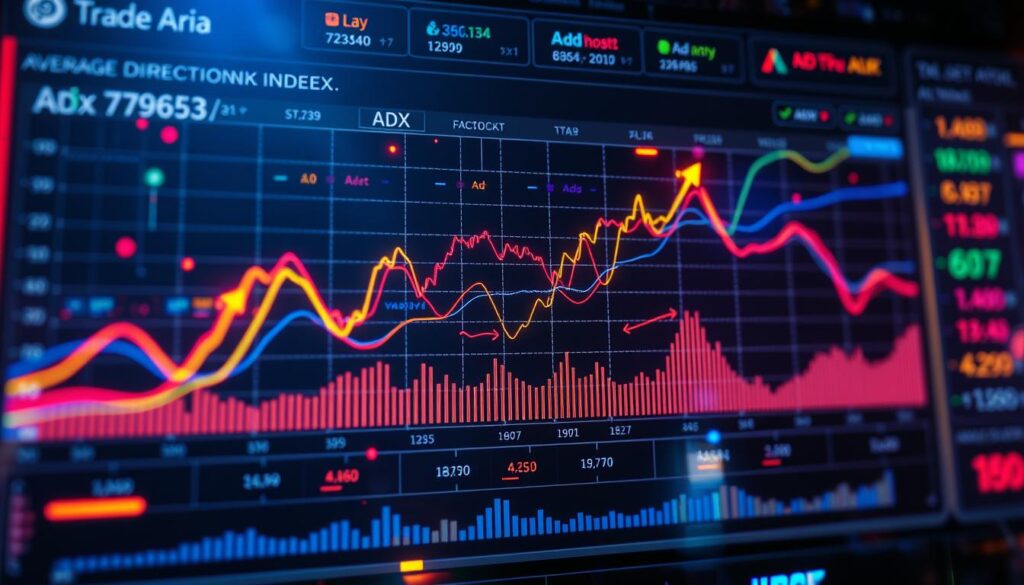
Pingback: TradingView: Best Trading Platform For Stock Analysis
Pingback: Best Technical Indicators For Stock Trading Made Easy
Pingback: Understand The Risks Of Investing In Stocks